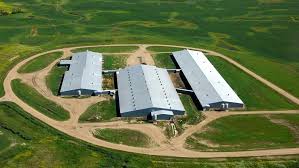
Saskatchewan’s pork producers are taking proactive steps to guard against the spread of Porcine Reproductive and Respiratory Syndrome (PRRS), an infection causing devastating reproductive and respiratory issues in hogs. With reports of increasing cases in other parts of North America, producers in the province are doubling down on biosecurity measures to protect their herds.
PRRS, first identified in the United States in 1987, has been a persistent challenge for the pork industry, particularly in pig-dense regions like the U.S. Midwest, southeastern Manitoba, and parts of Ontario. These areas have experienced seasonal flare-ups of PRRS, with the most recent mutation proving especially destructive.
Florian Possberg, a partner with Polar Pork Farms, highlights the stark contrast between these regions and Saskatchewan:
“In pig-dense areas like the U.S. Midwest and some parts of Ontario and southeastern Manitoba, we’ve seen flare-ups in a semi-regular, seasonal pattern. This fall, a new mutation of PRRS has caused significant devastation in infected herds.”
Possberg notes that Saskatchewan and Alberta have largely eliminated PRRS from their herds through rigorous biosecurity protocols. Despite their success, vigilance remains critical as outbreaks elsewhere lead to increased piglet prices, signaling supply shortages caused by reproductive failures in affected regions.
“Last year, the USDA price for baby pigs, three-and-a-half weeks old, was about $37. Last week, it hit $80 USD, reflecting a significant shortage to fill finishing barns in the Midwest.”
Saskatchewan’s commitment to stringent biosecurity practices has so far kept the province’s herds safe, underscoring the importance of industry-wide efforts to prevent the spread of this costly disease.
For more updates, visit Farmscape.ca.
This article is based on content from Farmscape, produced on behalf of North America’s pork producers.





